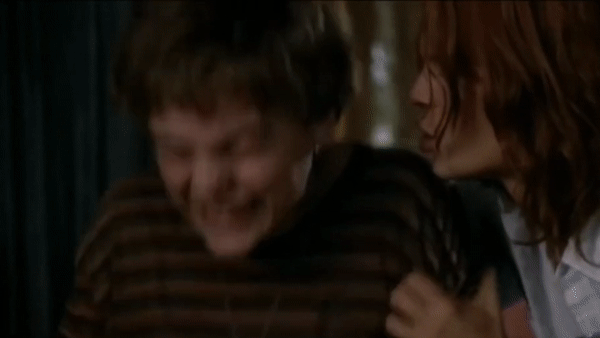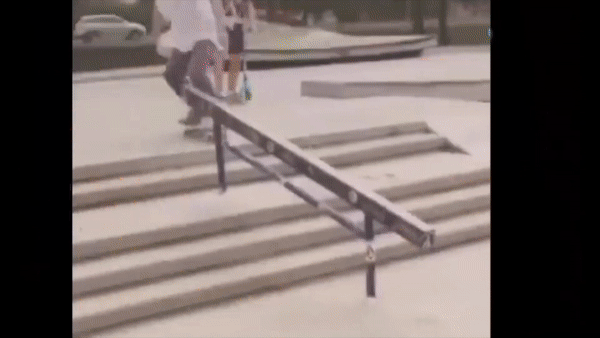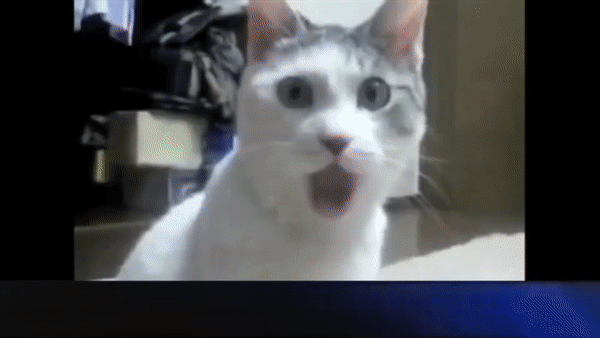The Visual Mixtapes of Michael Dayton Hermann Tap Into the Collective Media Memory Space
Watching Michael Dayton Hermann’s Mixtape (2018) will be a familiar experience to anyone who grew up on television — the casual encounter of images, the ways YouTube clips and advertisements and music videos interact with one another in (collective) memory, strung together in staccato cuts and overlapped in visual noise, a sensation only exacerbated by today’s proliferation of screens, so often viewed simultaneously. Further, this appropriation situates Hermann in a legacy he is very much a part of keeping alive in another way in his position as Director of Licensing for the Andy Warhol Foundation. In Mixtape each track title is borrowed from a book and each song is a favorite of Hermann’s. Like a mixtape, it is self-produced and available for free. While the term “mixtape” may at first seem anachronistic, it is a word that remains clinging on, a vestige, an echo of an analogue culture where cutting was more literal. Here cutting is flashing and constant, but also visible. Browsers and editing software remain visible, but somehow the fantasy is unbroken. Mixtape is a regression to a purely sensorial form, a sort of atavistic conjuring of lost channel surfing, an imagistic id. When Herman asks in his project description “What if when your life flashes before your eyes all you see is the media you consumed?,” it begs the question “what life is there beyond consuming media?”
Chapter 1:
The Naked Soul (“It Was A Good Day,” Ice Cube)

^ Click to view The Naked Soul.
The first chapter in in Hermann’s visual mixtape opens with a question. In a scene from Menace II Society (1993), protagonists Caine and O-Dog can be seen walking away from the house (they have just been involved in a moral, biblical discussion) and grandpa calls out “Hey! Do you care whether you live or die?” The cadence of this utterance is critical, the pause before “or” is an emphasis not on an even binary but of an option and its alternative, a fork in the road. Caine stops. With consternation and true uncertainty he responds “I don’t know.” Caine and O-Dog continue out into the world, setting the scene for the rest of the mixtape. From here the speed picks up. Almost comically deflecting the severity of the question that has opened the chapter, a series of images from advertising, television, and so forth are montaged in a manner reminiscent of a Vine comp. McDonald’s ads, fail videos, basketball, and boxing figure large among other clips of joyful violence and internet pornography, while Ice Cube’s “It was a Good Day” (1992) plays. The slack-jawed, ecstatic stupidity of trying to break a brick over your head, the innocence of eating a Happy Meal hamburger, the truly marvelous feat that is the slam dunk — the first track is a flurry of sugar-coated images.
Chapter 2:
How to Win Friends and Influence People (“Nikes,” Frank Ocean)
This chapter begins with a glitch — a repeated restart of a YouTube video. A glitch is a failure, but in its failure it reveals its medium, reveals its technical substrate, its being transmitted over networks, its existence as transmission. While surf videos play, there is the hazy overlay of a view from what is presumably a helicopter. Against the eulogistic crooning of Frank Ocean’s uptuned voice in “Nikes” is the crackling, even voice of military correspondence. (The sound is sourced from the same mission recounted in David Finkel’s 2009 The Good Soldiers.) Here, media is militarized — to see is to have power, to be seen is to be in danger. What could by hypnotic — waves crashing, Blond playing — becomes disturbing, or rather, it is disturbed by the walkie-talkie static, the gunshots. Of course, media has long been militarized in the United States, where news programs revels in violence at home and abroad to draw eyes towards advertising views. To view violence is to be complicit in it. This barely visible overview from the helicopter camera, which allows a death divorced from blood, is layered with voices divorced from their actions: “One small child wounded,” uttered without urgency; “Ah damn. Oh well.” “Nikes” invokes Trayvon’s name. Surfing and surveillance sonically read together, a slant rhyme undone by the voicing and vibration of a single sound. “Nikes” ends with the voice of a child. Images of death disperse, repeating like a word said over and over until it almost seems to lose its meaning. The body still remains.
Chapter 3:
Middlesex (“Let It Happen (Soulwax Remix),” Tame Impala)

^ Click to view Middlesex.
The screensaver is a queer form. It is neither shut down nor action. In fact, in computer terminology not even “sleep.” It is not the computer’s dreams or mind, it is the computer suspended. If Hermann’s videos are meant to act as a vision of what might flash before our eyes just before death, this is purgatory. Along with this purgatory are scenes of Pacman, whose death is always a meaningless death. And not meaningless in just that it is digital, unreal, never was alive, but meaningless because Pacman will rise again, his death is always temporary. Just insert another quarter. Splitscreen scenes of films, scenes of conflict, discomfort, yelling children play — reality forcibly punctuating the blissed-out danciness of a Tame Impala remix.
Chapter 4:
Divine Horsemen (“El Botellon,” Uproot Andy)
If social media is all about making the self, then why do we all look the same? Food shots, party shots, and lots of filters. Facetune or dog ears or comical distortions offer novelty to the unrelenting sameness that is our own face. These digital costumes, viewed in simultaneous, seemingly-infinite Instagram scrolls are offset by photos of a man in physical gag costumes. The mindless act of scrolling reveals the handheld banality of photographic self-expression.
Chapter 5:
Beneath the Underdog (“Broken Face,” Pixies)

^ Click to view Beneath the Underdog.
Schadenfreude and second-hand embarrassment are two sides of the same coin. The absurdity of pageant moms and the wincing horror of skate fails attract us, get us off even — revealing our cruelest selves. These weak forms of expression are layered with another sometimes vapid symbol, the emoji, to create an absurdist romp set to the alt-rock thump of the Pixies.
Chapter 6:
Among the Thugs (“S.O.B.,” Nathaniel Rateliff & The Night Sweats)
The violence of boxing returns with phrases like “you’ll never get me into a ring boxing causes brain damage” only to be wryly countered with damage of plenty of boozing (“the cause and solution to all of life’s problems” as Homer Simpson’s voice tells us). All the unpleasant aspects of intoxication, another variety of fail video, tumble along, a vision of consequenceless excess. Life under capitalism is rendered so meaningless, or perhaps so abject, that one can think about grabbing a burger after a daylight murder.
Chapter 7:
Into the Wild (“Start a Fire,” Radio 4)

^ Click to view Into the Wild.
Again, surfing footage guides this chapter of the mixtape, but now from first person with all the crashing of waves against the GoPro’s tinny mic and the labored breathing of the surfer magnified by the scratches and screeches of Radio 4 while clips of singular, resigned faces from TV and film, like Her and Game of Thrones, appear before we dive into the monstrous deep.
Chapter 8:
Fear and Loathing in Las Vegas (**“Shimmy Shimmy Ya,”** Ol’ Dirty Bastard)
“Give me the mic so I can take it away,” Ol’ Dirty Bastard says, here begging the question “who has the microphone?” That is, the power to speak. Drunkenness continues — here karaoke shows the absurdity of whiteness’s constant attempts to give voice to the whole world. Hip hop and Blackness so often problematically serve as a steal-able material for empty performances by non-Black people, who thoughtlessly and inexcusably act and posture as if in carnival-esque costume, flattening subjectivities beyond their own.
Chapter 9:
War and Peace (**“Brooklyn (Chiraq),”** Young M.A)

^ Click to view War and Peace.
Of all the remixes, this is the least remixed. Young M.A.’s video plays with the occasional interruption of YouTube cat videos and cable TV ads and the distraction of the news ticker. To prevent reality’s binding escapism’s bounds, reality itself becomes entertainment.
Chapter 10:
The Artist’s Struggle for Integrity (“The Passenger,” Iggy Pop)
Rock’s rawness is so often a masculine excess, another kind of violence which is here countered by the quiet eating of Burger King by one of art’s effete elites, a stoic counterbalance that proffers up its own form of cold cruelty. Meat is murder, and we get off on it. Life and death is something outside of us and our time, a powerlessness to something bigger or greater — or maybe to nothing at all. In this vastness, what does the artist speak to then? And what remains of them, their legacy, when they’re gone? We remain passengers, witnesses dragged along. This outro is a punk rock goodbye to planet Earth.
Text by Drew Zeiba for PIN–UP Online.




